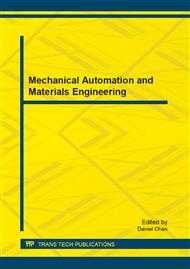p.573
p.577
p.584
p.589
p.594
p.599
p.603
p.609
p.614
Application of Temperature Forecasting in Cupola Melting Process Based on BP Neural Network
Abstract:
In cupola melting process, the temperature of molten iron is an important indicator of the quality of cast iron. Its difficult to optimize the design because of the varicosity of influencing factors in cupola melting process. This article established a BP neural network model to forecast the temperature of molten iron in cupola melting process, thus use the genetic algorithm to optimize the model. Comparing the average errors of the temperature of molten iron before and after optimization, it indicated that the BP neural network model using genetic algorithm optimization forecasted the actual situation in cupola melting more accurately.
Info:
Periodical:
Pages:
594-598
Citation:
Online since:
August 2013
Authors:
Price:
Сopyright:
© 2013 Trans Tech Publications Ltd. All Rights Reserved
Share:
Citation:


